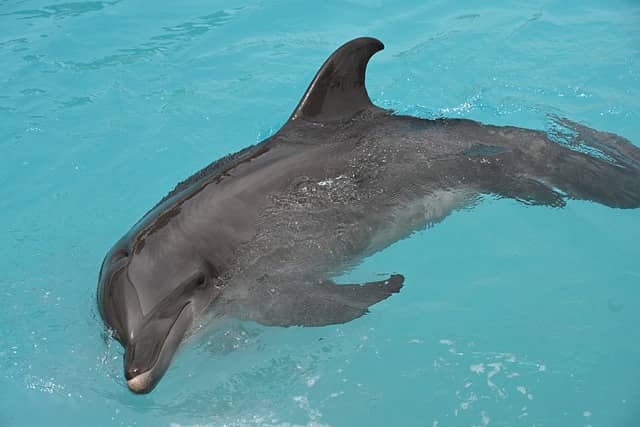Parasitosis and dehydration causes the death of dolphins in Tulum
According to the first necropsy results, a female dolphin, stranded in the vicinity of Tulum National Park presented severe parasitosis and her calf was extremely dehydrated.

Experts who participated in the care of a female dolphin and her six-month-old calf, stranded in the vicinity of Tulum National Park, informed that according to the first necropsy results, the mother presented severe parasitosis and her calf was extremely dehydrated. Both specimens were assisted since 11:00 p.m. last Sunday. The mother died on Monday afternoon and the calf the next morning, and it was ruled out that the sargassum was related to the death.
The experts recounted the whole process they carried out with both specimens, which included keeping the female in their arms to keep her afloat all night Sunday and part of Monday, the supply of medicines, and the maneuvers they carried out to move them to a better place since the conditions where they were were were not optimal.
All the results are still pending, but the first signs of the necropsy indicate an impressive parasitosis. These specimens are of the species Stenella Frontalis, popularly known as painted or spotted dolphin.
Before undertaking the whole process, samples were taken and analyses were made to know what they were facing, and a support therapy was given, detecting severe infectious signs. The baby was dehydrated due to stress and fatigue. They decided to move them for hygienic conditions and ease of handling, as antibiotic therapy was required. They got a pool and in the inter for the transfer, the female died when she went into severe shock.
As with any calf, a change can be sensitive, but there was no alternative. There was no mishap, and she was given a light feeding, she even swam well, but on Tuesday morning she began to have problems floating and went into shock and died. According to the information provided, by law, necropsies must be performed, the results of which take from two to one month, and must be delivered to the Federal Attorney's Office for Environmental Protection (Profepa), along with all the documentation of the entire care process.




